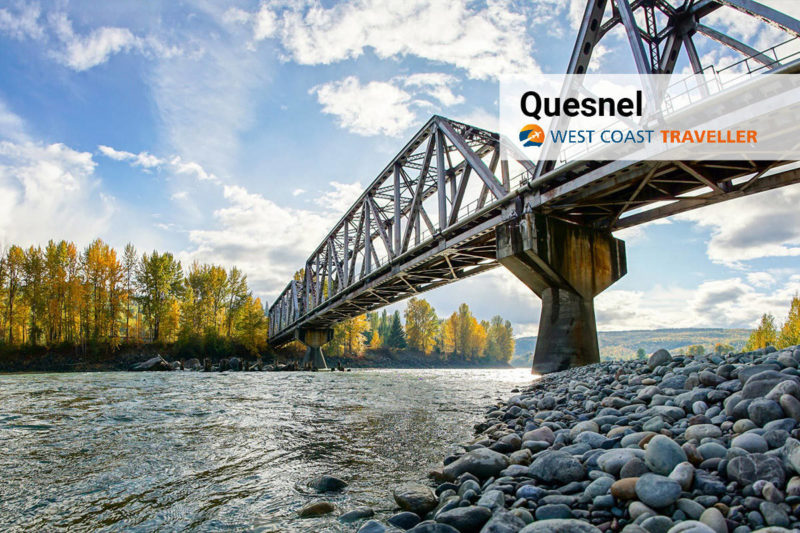Even if you’re only going to Quesnel and the North Cariboo for a day or two, you’re sure to find something that makes you fall in love with the area. You’ll get a sense of the small community the minute you arrive, but it’s big enough to offer something for everyone.
Quesnel is an ideal spot for outdoor enthusiasts, busy families and history lovers alike!
The city, located on the traditional territory of the Lhtako Dené, offers a variety of trails and walkways through warm communities, along beautiful rivers and past spacious parks. Quesnel’s downtown core underwent a major revitalization recently and their friendly merchants invite you to discover treats and treasures while you meander the main streets and enjoy wide sidewalks with beautiful seating areas.
Surrounded by farms, you can fully embrace the 100-mile diet concept here by shopping for everything from local beer to artisan cheese, or visiting the downtown Quesnel, Wells & Nazko farmers’ markets during the summer.
A community that celebrates the past, present and future, if you’re interested in Cariboo history, discover great opportunities to explore historic trails by horseback or by canoe. You can even pan for gold along the banks of the Fraser and Quesnel rivers!
Find museums in Quesnel and Wells, and visit the Antique Machinery Park south of Quesnel, featuring a blacksmith shop, sawmill and other machinery plus technology used in the 1800s and early 1900s.
Costumed interpreters can take you on tours of Barkerville Historic Town and Park and Cottonwood Historic Town Site. If you arrive in late January, you can even watch sled dog teams carry the mail along the Gold Rush Trail.
Facts
• In the early 19th century, Simon Fraser explored what is now known as the Fraser River, naming a major tributary for his clerk, Jules Maurice Quesnel. The community that eventually grew at the confluence of the two rivers became known as Quesnel.
• In the spring of 1857, gold was found in the Fraser River, initiating a Gold Rush, with prospectors coming from all over North America to strike it rich. A major strike in the Williams Creek area in 1861 was the official beginning to the Cariboo Gold Rush and the growth of Barkerville. In its heyday, the boomtown was said to be the most populous city north of San Francisco and west of Chicago!
• Due to Quesnel’s location, it became a major stopover and supply centre for the gold fields to the east. Chinese miners, who were panning the Quesnel River’s sandbars, eventually turned to business, opening up a variety of stores in town and providing services to the fortune seekers passing through.
• The area’s forestry industry expanded considerably during the Second World War, when they became a major supplier of birch, which was used as plywood to manufacture the Mosquito Bomber. By 1952, there were 180 sawmills and five planer mills within 30 miles of Quesnel.
• The Quesnel & District Museum & Archives is the best place to explore the City’s fascinating history, as well as a few additional exhibits with Mandy, the haunted doll and a vanity from the Titanic.
Quesnel’s temperate climate features warm summers and cold winters, with significant rainfall throughout the year – 524 mm (20.6 inches) annually.
Destination BC is developing a new campaign to promote hyper-local travel where residents are “tourists-in-their own hometown,” while practising the COVID-19 safety protocols as recommended by the B.C. Provincial Health Officer. Many B.C. parks are now open, and national parks were to open as of June 1.
(Check this website for current details on travel.)
Getting Here
Driving: From Vancouver, drive seven hours (661.1 km) via Trans-Canada Hwy & BC-97 N
By Rail: The Rocky Mountaineer travels from Vancouver through Quesnel on its way to Jasper, Alberta.
Flying: Daily flights connect Vancouver International and Quesnel Regional airports.
Dream now, travel later. To plan for future adventures here and throughout the West Coast, visit westcoasttraveller.com











 Discover Creston, BC
Discover Creston, BC